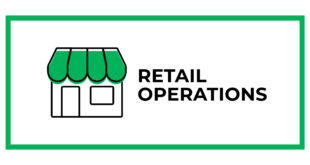No matter how well you run your store and regardless of how well your employees provide customer service, more than likely you’ll eventually find a customer who has a complaint. The reasons may vary. Maybe they purchased a defective product, maybe they didn’t receive the service they expected from your store or maybe the product they purchased didn’t perform how they thought it would.
Even if you’re not to blame for the customer’s unhappy state, it’s in your best interest to help fix the problem. While many complaining customers will want to talk to a manager, every employee needs to have the proper skills for dealing with this situation. Here are some tips you can share with them.
Stay Calm
If the customer is aggravated, it won’t help anything if you get visibly upset, too. Stay calm and treat the customer with courtesy and respect. Thank them for bringing the matter to your attention and apologize that they had a problem. It’s likely that your customer is as uncomfortable with the situation as you are, so anything you can do to diffuse the situation will start you on the path to a happy ending. Politely ask the customer to move to an area away from the busy sales floor so you don’t make a scene.
Listen
Don’t interrupt or try to correct the customer as they explain their problem. This sends them a signal that what they have to say is important to you. Don’t challenge what they have to say, as that could only escalate the situation. Also, don’t agree or disagree with what they are saying, rather, use phrases such as “I understand.” As the customer is talking, take notes so you don’t have to ask them to repeat important information. Let them finish talking before offering solutions.
Acknowledge the Complaint
When it seems the customer has finished expressing their complaint, acknowledge that you understand what they have said. Much of the time, their concern will focus on a particular product they purchased. If that is the case, then examine the product with them. Point out anything that might be out of the ordinary with the product. Then help the customer understand what might have caused the problem. If the product is fine and was simply misused, try to prompt the customer to draw their own conclusions about what went wrong.
Offer a Solution
Once you’ve talked through the problem, it’s time to come to a conclusion. Before suggesting your own solution to the issue, ask the customer what they think is the best solution. Customers may be expecting less than you have to offer. They might realize they were the cause of the problem and expect nothing from you. Your store likely has a policy about how you are allowed to compensate customers if the blame falls to you.
Whatever the solution, remember that how you deal with a customer complaint can have a big impact on how that customer views your business in the future. If you deal with the issue well, you could end up gaining a loyal customer.
 Hardware Retailing The Industry's Source for Insights and Information
Hardware Retailing The Industry's Source for Insights and Information








